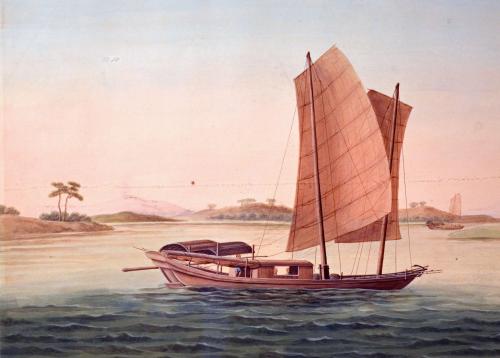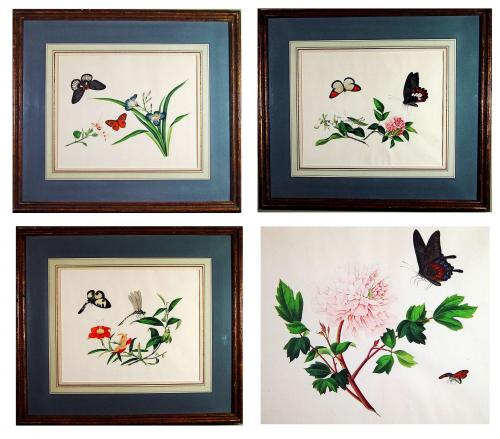

Price on application
This object is eligible for a Certificate of BADA Provenance
The BADA Standard
- Since 1918, BADA has been the leading association for the antiques and fine art trade
- Members are elected for their knowledge, integrity and quality of stock
- Our clients are protected by BADA’s code of conduct
- Our dealers’ membership is reviewed and renewed annually
- Bada.org is a non-profit site: clients deal directly with members and they pay no hidden fees
Set of Eight Chinese Watercolours of Exotic Fruit.
Pith Paper Paintings.
1870-80.
Paper.
The eight Chinese watercolours on pith paper are of fine quality and depict various exotic fruits including pineapples, lychees, finger citrus and orange amongst others. Now framed with a thin gilt frame and cream mat with an green inner bezel.
Reference: China Trade watercolours although produced as early as the late 18th century, enjoyed the height of their popularity in the 1840's and '50's. Travels to China were difficult and expensive, and those from the West that could afford to make the journey did not wish to return empty-handed.
Similar to the Grand Tour of the Continent, China was one of the ultimate elite destinations and anything of quality that was brought back immediately became status symbols.
Watercolours, available in a variety of subjects and quite handsomely bound were a popular choice not only due to their aesthetics, but also because of the ease of which they could be carried; large oil paintings and bulky ceramic objects did not lend themselves well to transport.
Although a commodity produced for business, the watercolours were very well done, often by well-respected artists. Many of the artists did not work in watercolours often; one of the most respected artists at the time, Sunqua, painted primarily in oils.
He worked in watercolor and gouache in the 1830's-late 1840's producing albums and single paintings for export and trade during this time.
He was an accomplished artist, who Crossman says: "...would seem to belong to an Italian or European tradition of ship and port painting", so good were his compositions and palettes.
The first cultural exchanges appeared in the 16th century, when Italian Jesuit missionaries began filtering into China; as the literati widely rejected their Christian teachings, the Italians hurried to find another channel through which to forge bonds in the East.
They began sending accomplished artists and teaching European painting techniques instead, forming a particular aesthetic that remained popular for centuries.
The earliest China Trade pictures were produced on both Chinese and European paper; "Beginning in the 1870's the Chinese artists used western paper for most of their watercolours for the export trade...Supplying the Chinese with the raw materials for a product which was to be sold in the West was not unusual, since it occurred in many fields of manufacture.
The other paper commonly used for watercolours and gouaches after 1800 or 1810 was pith which has been mistakenly called 'rice' paper, both at that time and today...' The so-called rice pater is made of the same pith of the Aralia papyrifera.
The pith is soaked before cutting; the workman then applies the blade to the cylinders of pith, and, turning them round dexterously, pares them from the circumference to the centre, making a rolled layer of equal thickness throughout'.
The pith paper was a very fragile medium on which to work and many of the watercolours on pith which have survived are cracked and broken.".
The pictures were then mounted into albums with a silk ribbon, often blue but not always, and bound between boards covered with brightly coloured and patterned silk.
Although it was extremely fragile, pith paper was widely favored due to its nature; the gouache used by the Chinese sat on the surface of the paper and produced a bright and sparkling effect.
Very fine detail could be achieved whilst maintaining clean, vibrant colours. The material did not lend itself to the flat wash of colour favoured for European watercolours.
Dimensions
13 1/2 inches x 16 3/4 inches wideStock number
NY07320The BADA Standard
- Since 1918, BADA has been the leading association for the antiques and fine art trade
- Members are elected for their knowledge, integrity and quality of stock
- Our clients are protected by BADA’s code of conduct
- Our dealers’ membership is reviewed and renewed annually
- Bada.org is a non-profit site: clients deal directly with members and they pay no hidden fees




